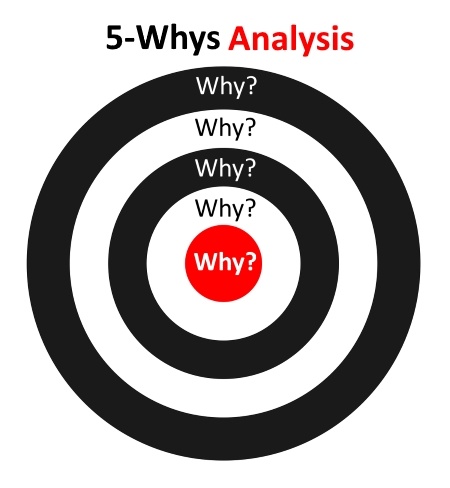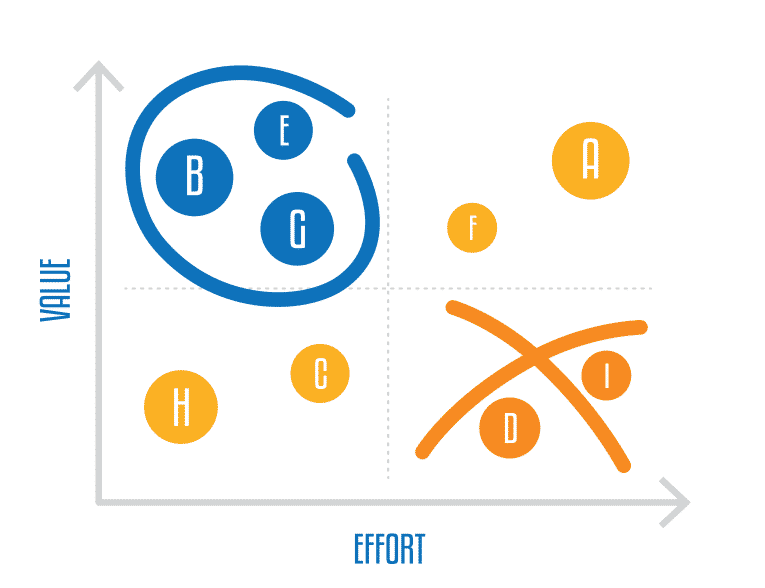
Ebrima Y. Jallow
7min read
Thinking Modes - An Approach to Problem Solving

Critical and Creative approaches to problem-solving.
Problem-solving is a critical skill that is essential for success in every aspect of life. Yet, rarely are we taught in school or at home how to solve problems. We’re expected to pass exams, solve complex coding challenges, and close deals, a how-to guide in each of these scenarios comes with its unique processes. And you can only remember as many processes. Hence, the need to put a a general structure / Mental Model for problem solving that is domain-agnostic.
One of these effective approaches to problem-solving is to use different thinking modes, which are different ways of approaching a problem and finding a solution. These modes, which include creative, and critical thinking, can help individuals to approach problems from different angles and come up with innovative solutions. By using these thinking modes, individuals can develop their problem-solving skills and become more effective at finding solutions to a wide range of challenges.
A problem well stated is a problem half-solved.
Firstly, let’s agree on the lingo. What is a Problem? A problem is a situation that has the potential to lead to a negative outcome when left unsolved.
Understanding something is a problem allows you to come up with a clear problem statement is arguably the most important part. In coming up with a problem statement, create a clear problem statement using the who, when, where, and what questions.
Identify the subject of the problem you are trying to solve. This could be a person, group of people, organization, or situation.
Who - Use the who question to identify the individuals or groups who are affected by the problem. When - Use the when question to identify the time frame in which the problem occurs or is relevant. Where - Use the where question to identify the location or context in which the problem occurs or is relevant. What - Use the what question to identify the specific issue or challenge that needs to be addressed.
e.g. The high cost of rental homes in The Gambia is causing financial strain for low-income families.
Avoid using Why and How questions because they can imply that the problem has a single, simple solution when in reality, it may be more complex and require a more nuanced approach to resolve.
For example, instead of saying “Why does this system not work as intended?”, you could say something like “The system is not achieving the desired outcome when X happens.” The former leads users to come up with causal relationships where none probably exist and the latter on the other hand, opens doors for further exploration.
A critical step on the path of solving a problem is first asking a very important question “Is this problem within my circle of concern or circle of influence?”
Circle of Concern: These are all your problems and include those you can influence e.g., how to react if you’ve been insulted in public, and some that you can’t e.g., traffic.
Circle of Influence: As the name suggests, these are the problems that you can influence, control, and resolve.
Now that we’ve generated a clear problem statement using the guide above and established that the problem lies within our Circle of Influence, we can now wear our thinking hats.
The Two Thinking Hats
Creative Thinking: In this mode of thinking, we generate creative ideas by brainstorming potential ways to solve a problem. This method applies divergent thinking as we begin with a prompt or questions and generate many solutions. for example: The team at a software engineering company is gathered to brainstorm ideas for improving user engagement in a mobile application. Ideas include implementing personalized push notifications, introducing a loyalty rewards program, and incorporating augmented reality features for a more interactive user experience.
Critical Thinking: This simply means identifying and analyzing a problem, then using facts and logic to evaluate ideas to decide which potential solution is likely to deliver the best results. This method applies convergent thinking, in that, we begin with pieces of information and converge around a solution. for example: The company is considering adopting a new programming language for future projects. Critical thinking involves gathering data on the language's performance, community support, and compatibility with existing systems. The team analyzes case studies of other companies that have successfully adopted the language.
The next step is to identify if a particular problem is worth solving. Ask at least 5 of these questions
- If no action is taken, what are the most likely results?
- How will the result affect you?
- How will the results affect your colleagues and the organization's objectives?
- If you take action, what are the risks and how big are they?
- Is it within your power and your organization’s power to implement a solution?
- Do you own the solution?
- Can you define where it starts and end?
Now let us get into the meat and bones of things. What is really going on? To answer this question, one has to be involved in examining and thinking of different ways to solve a problem and subsequently start looking into multiple solutions and pick the most optimal one. All in all, get clarity on the problem before you try to solve it.
Every problem contains within itself the seeds of its solution.
- Stanley Arnold
The problem-solving process - Analyse
Usually, due to biases like confirmation and availability bias, we are quick to pick the first solution to a problem that comes to mind. This is a very shallow approach to problem-solving and no better than guesswork.
To develop a more targeted and effective solution, you first have to go beyond the symptomatic problem signals to the root cause.
Root Cause Analysis: The most common process in finding the root cause of a problem is the “5 why principle.” - This principle suggests that you continue to ask Why at least 5 times until you get to what is called the root cause. The root cause uncovers the fundamental cause that created the problem.
Here's how it works:
- Identify the problem: Start by clearly stating the problem you are trying to solve.
- Ask "why" at least five times: For each "why," consider the cause and effect relationship of the problem. For example, if the problem is that a machine is not working properly, you could ask “Why is the machine not working?" and then “Why is that happening?" and so on.
- Identify the root cause: After asking "why" at least five times, you should have identified the root cause of the problem. This is the fundamental issue that needs to be addressed to solve the problem.

Here is a list of other root cause analysis tools commonly used in problem-solving.
- Cause and effect diagrams.
- Pareto charts.
- Histograms.
- Frequency plots.
- Flow diagrams.
- Process failure mode-effect analysis.
- Fault tree analysis.
- Gap analysis.
- Affinity diagrams.
- Statistical process control.
- Process Capability Analysis.
What are my options - When confronted with a problem, at times our first instinct is to approach the problem from a single angle and pick the first seemingly plausible-sounding solution. This takes you to a Local Minimum when your goal is a Global Maximum. So do as I Ching once said, “When the road comes to an end, change directions and you will pass through”. Try multiple approaches to a problem, brainstorm, and select the optimal solution.
When the road comes to an end, change directions and you will pass through
- I Ching
The problem-solving process - Explore
This step essentially revolves around brainstorming to generate ideas. However, a brainstorming session has to conform to certain criteria to be effective.
- Go for diverse quantity, not quality.
- Involve outsiders if possible.
- Expand and improve other people's ideas.
- Do not criticize - stay positive.
Narrowing down brainstormed ideas to a single, optimal solution can be challenging due to the subjective nature of the concept of "best." To inject objectivity, specific criteria can be considered to determine the most appropriate solution for the problem at hand. This approach can avoid guesswork and ensure that the chosen solution is the best fit for the given situation.
What is the best solution? First ask these questions
- How long does it take to implement the solution?
- Is it scalable and sustainable?
- Does it have management approval?
- Who will do most of the work?
Genious is one percent inspiration and ninety-nine percent perspiration.
- Thomas Edison
The problem-solving process: Select
Identify -> Decide -> Choose
- Identify the type of solution you’re looking for.
- Decide who should select the best solution.
- Choose the solution that you’ll implement.
Now we’re ready to select our solution. A solution can be one of these types
Corrective solution
- Corrects or fixes the root cause of the problem.
- The problem should disappear.
The adaptive solution
- Accommodates the problem
- Doesn’t fix the root cause but minimizes the impact.
Interim solution
- Buys you time to come up with better solutions.
- Puts a bandage on the problem.
Contingent Solution
- Backup plan.
- You have it ready in advance in case of the problem surfaces in the future.
Preventive solution
- Created before a problem occurs.
- Should also be implemented prior.
Finally, on selecting a solution, we identify factors that influence the solutions we choose and who gets to choose them.
Time: is directly proportional to the total number of people involved. Quality: Better solutions may require expert input. Buy-in: Consensus building. Essentially, do we have enough people supporting our solution?

A perfect solution to our difficulties cannot be found in an imperfect world. - Sir Winston Churchill
Problem-solving Process: Implement
The first part of implementing a solution is to measure it. How?
- Establish the criteria for success.
- Determine what you will measure.
- Decide how you will measure it.
- If you can't measure it, you can't manage it
And finally, ask the following questions
- What needs to be done.
- In what order?
- Who will do it?
- When will they do it?
Key Takeaways
-
Identify problems by creating a problem statement.
-
Use Who When Where and What to create good problem statements.
-
Analyze a problem by using the "5 Whys" principle.
-
Explore possible solutions via brainstorming.
-
Select: Best solution through
- Corrective, adaptive, interim, contingent, and preventive solutions.
-
Factors to consider when choosing a solution.
- Time
- Quality
- By-In
- Use Ease-Effective Matrix
-
Implement: Measure
- criteria of success
- What will be measured
- Who will measure it?
- How it will the measurement be done.
Conclusion
Problem-solving is a crucial skill that can help individuals and organizations to overcome challenges and achieve success. By using creative and critical thinking modes, it is possible to approach problems from different angles and generate innovative solutions. By using the 5 Why principle, it is possible to identify the root cause of a problem and develop targeted and effective solutions. When choosing a solution, it is important to consider the potential impact on oneself, colleagues, and the organization, as well as the risks and feasibility of implementation. By following these steps, it is possible to effectively solve problems and achieve desired outcomes. At Assutech, we understand the importance of problem-solving and strive to provide our clients with innovative solutions that meet their unique needs and challenges.


